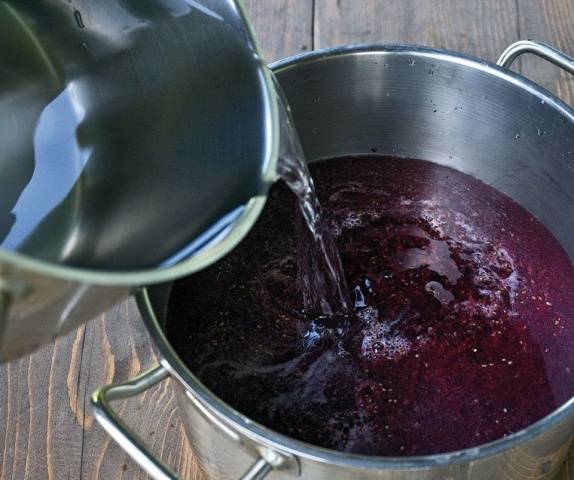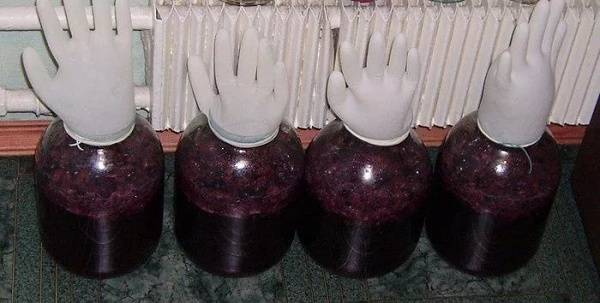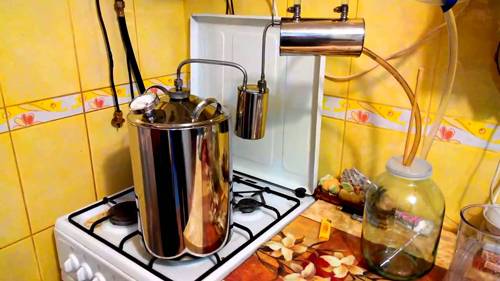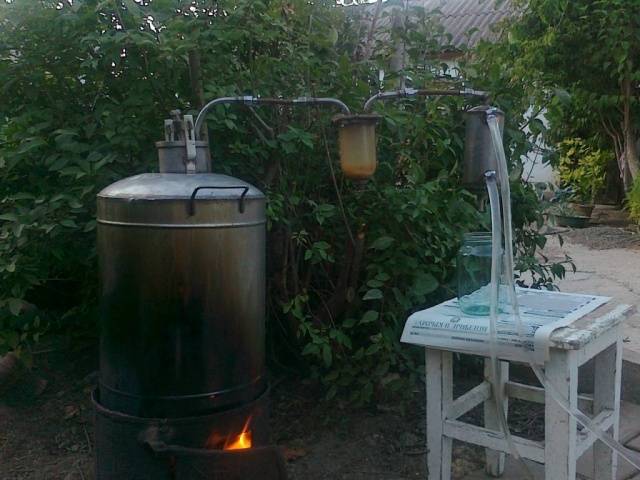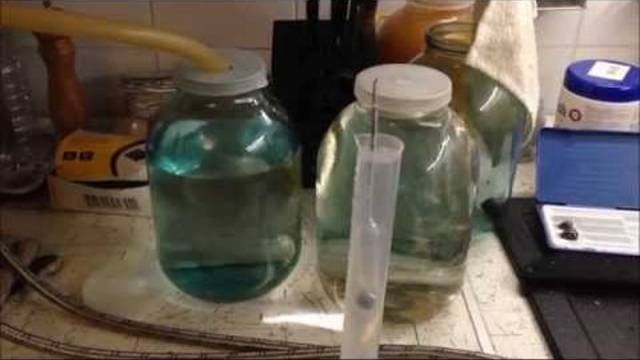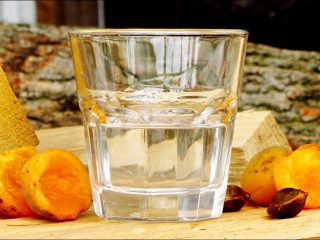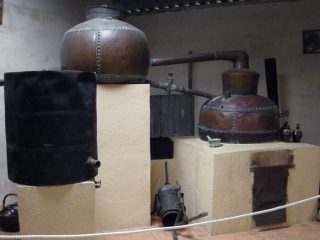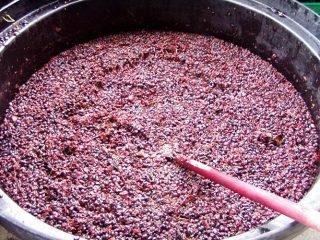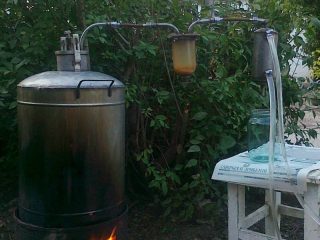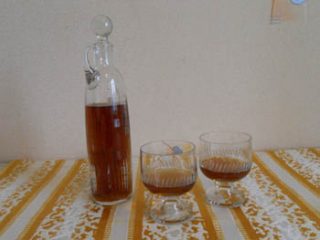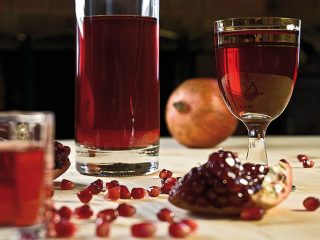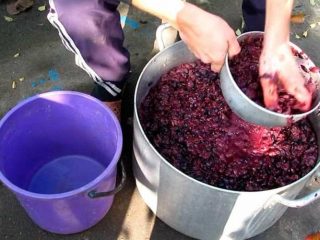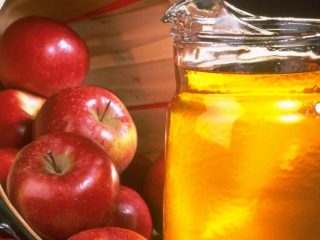Content
Isabella grapes are an excellent raw material for making juice and homemade wine. As a rule, after processing there is a lot of pulp left that does not need to be thrown away. You can use it to make chacha or, more simply, moonshine. Georgians call grape moonshine chacha, and Italians call it grappa.
There is nothing complicated in technology, so chacha from Isabella at home any recipe turns out excellent. The main thing is to follow the rules and have special equipment in the form of a fermentation tank and a moonshine still.
Features of preparing mash
Recipes for making chacha from Isabella grapes There are quite a few at home, but the process itself is almost the same. It all starts with mash. It is this composition that must first be prepared.
Preparatory work
Homemade mash is prepared from unripe Isabella grapes with twigs or from the pulp remaining after processing the berries into juice or wine. In the first case, wine yeast is not required, but in the second, this component cannot be avoided.
- The grapes are harvested in dry weather. There is no need to wash the berries, since the whitish coating on the fruit is natural wild yeast necessary for the fermentation process.
- The bunches are placed in a large bowl and pressed. You can use various presses, but to prepare mash, the procedure is best done by hand.
It is advisable to wear gloves when crushing the berries, otherwise you will have to wash your hands for several days after work.
- After the berries are crushed, and there is no need to throw away the branches, the liquid must be separated from the pulp. You shouldn’t squeeze it too hard so that some of the juice remains, in this case the chacha will be of better quality.
Let's start the mash
Now let’s talk about how to make mash from Isabella grapes:
- Place the pulp or cake in a large fermentation tank. We choose dishes made of enamel, stainless steel or plastic, but food grade. Aluminum utensils are not suitable for making mash, since the acid released by the grapes comes into contact with the metal.
- Then let's make the syrup. The required amount of sugar is combined with boiled water and cooled to 30 degrees. Higher temperatures can destroy the yeast and fermentation will not occur. Pour the syrup into the fermentation tank and add the rest of the water. Mix everything thoroughly.
The ideal sugar content in wort is from 18 to 20 degrees. If you have a sugar meter, use it. - If wild (live) yeast from cake is used for fermentation, then ordinary yeast is not added. In the case when this ingredient is necessary, you need to use special ones - alcohol or beer. The fact is that baker's yeast can spoil the mash, and its end result - chacha from Isabella.
- We install a water seal on the container, and place the container itself in a warm place with a temperature of at least 25 degrees.
You can tell that fermentation has begun within a day by looking at the foam.If the mash from unripe Isabella was made with wild yeast, then the fermentation process lasts 15-30 days. In alcoholic or brewer's yeast, the marc or cake will ferment less; the mash will be ready for distillation in a week or two.
Determining the readiness of the mash to produce chacha is easy:
- Firstly, carbon dioxide will no longer be released from the water seal.
- Secondly, the foam will disappear.
- Thirdly, the sugar will no longer be felt, and the liquid itself will taste bitter.
We talked about how to prepare mash, and now we move on to distillation.
Rules for distilling mash into moonshine
Chacha from Isabella grapes is prepared at home from the leftover mash by double distillation.
Only in this case will you get chacha with the aroma of grapes, reminiscent of wine in taste.
Primary distillation
- First, you need to get raw alcohol from the mash, in which Isabella is preserved. The process requires the maximum power of special equipment, while crushing into fractions does not occur.
- In the case where there is no steam-water boiler available, you can use a regular moonshine still for the initial distillation of the mash at home, but first you need to remove the cake from the mash. This can be done using thick fabric.
Secondary distillation
To prepare chacha from Isabella grapes, you need to distill the mash again. This procedure at home is much more complicated than the first one. The second distillation is a longer and more labor-intensive process. The main task is to separate the “tails” and “heads”.
Chacha preparation process:
- We measure the resulting raw alcohol for both volume and strength.Then add water to the total mass within 20 or 30 percent. This will help separate the factions.
- Pour the composition into the distillation apparatus and put it on low heat. The head fraction should come out in droplets; in total it will be ten percent of the total volume. The “aroma” of the “head” is not pleasant, and you can’t drink it, just like the “tails”.
- When the smell becomes pleasant, remove the container with the head and place a clean jar to remove the “body” - alcohol suitable for drinking. It makes up about 70% of the mass.
- After a while the smell changes again and becomes stinky. This moment must not be missed so as not to spoil the drinking alcohol obtained from Isabella grapes. Experienced moonshiners know that the movement of the tails begins when the apparatus heats up to 95 degrees. The process of obtaining grape moonshine from Isabella must be stopped.
Secondary distillation produces aromatic chacha from Isabella grapes. This is a strong drink of about 90 degrees. It is impossible to drink chacha of the second distillation in its pure form, so it is diluted to 40 or 45 degrees.
Moonshine made at home from Isabella grapes requires a week of aging, and for storage you can only use glass containers: jars or bottles that are tightly closed with lids or stoppers.
If you pour alcohol into an oak barrel and let it sit for several years, you will get a drink that tastes like cognac.
Chacha options
There are many recipes for chacha from Isabella grapes, we will present to your attention several of them so that you can choose the one that is most suitable for you.
Recipe 1 – with yeast
We will need:
- 5 kg of Isabella grapes;
- 15 liters of clean water;
- 2.5 kg granulated sugar;
- 40 grams of dry wine yeast.
We knead the unwashed grapes, squeeze them, and then proceed as described above.
Recipe 2 – without yeast
To prepare chacha at home, we will not use yeast according to this recipe in order to obtain a finished product without the aftertaste of this ingredient.
We start a brew using the following ingredients:
- unripe Isabella grapes – 15 kg;
- water – 5 and 40 liters;
- sugar – 8 kg.
You can use fresh grape pomace or pomace from previously made wine.
Chacha from Isabella at home:
Conclusion
As you can see, if desired, you can prepare aromatic moonshine at home from Isabella grapes, which is called chacha. The main thing is to observe technology and cleanliness. Of course, chacha at home will be slightly different from that produced in a factory. But you will have the opportunity to experiment and improve the taste of chacha. But remember, any alcoholic drink is useful only when consumed in moderation.
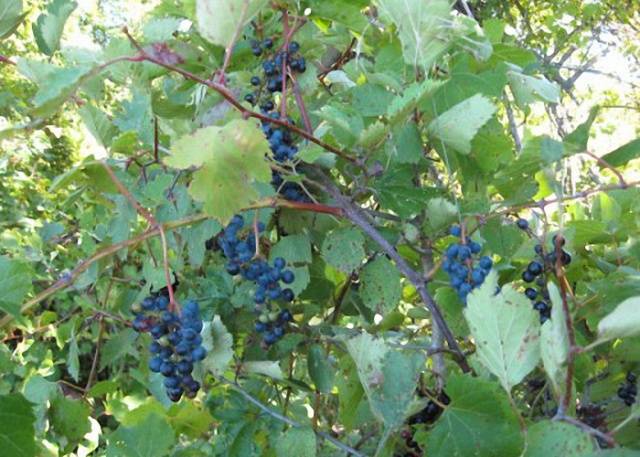
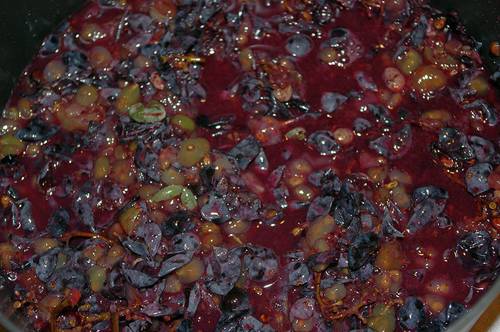 It is advisable to wear gloves when crushing the berries, otherwise you will have to wash your hands for several days after work.
It is advisable to wear gloves when crushing the berries, otherwise you will have to wash your hands for several days after work.